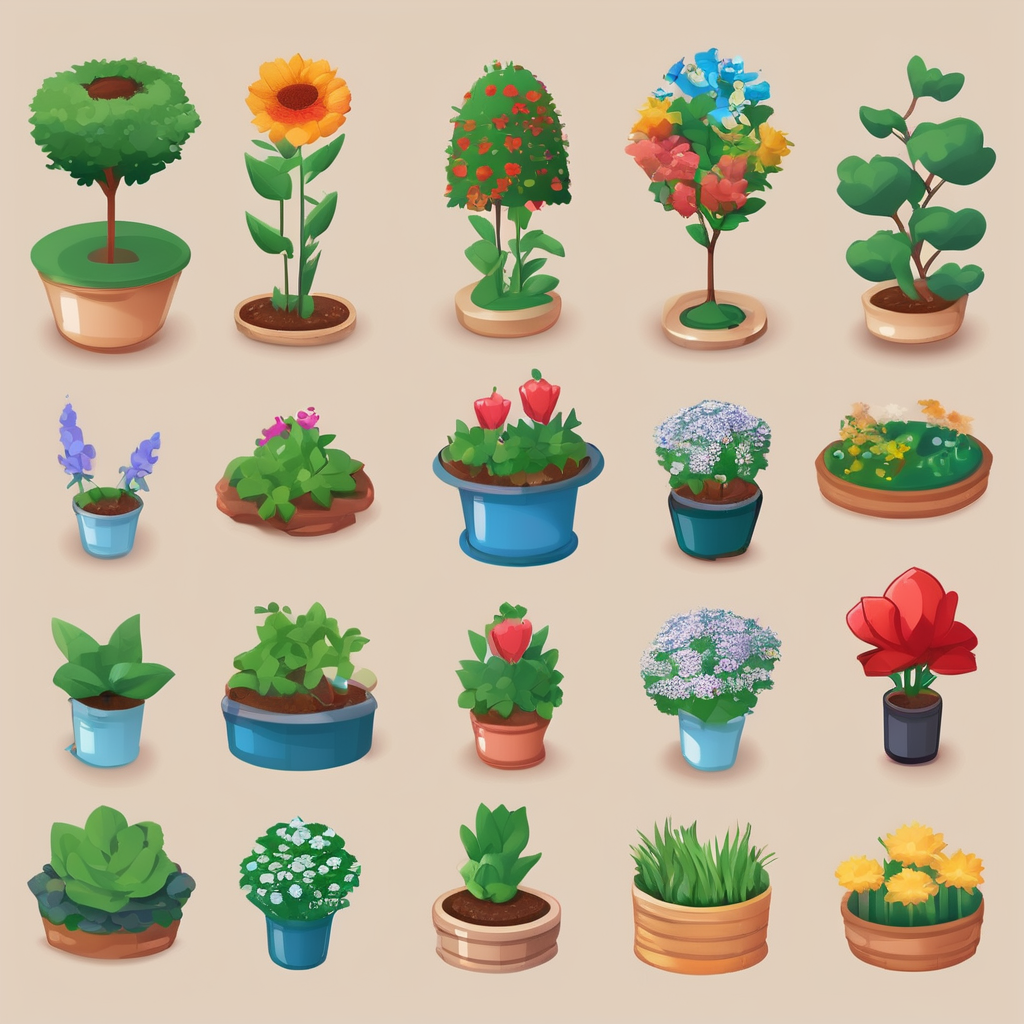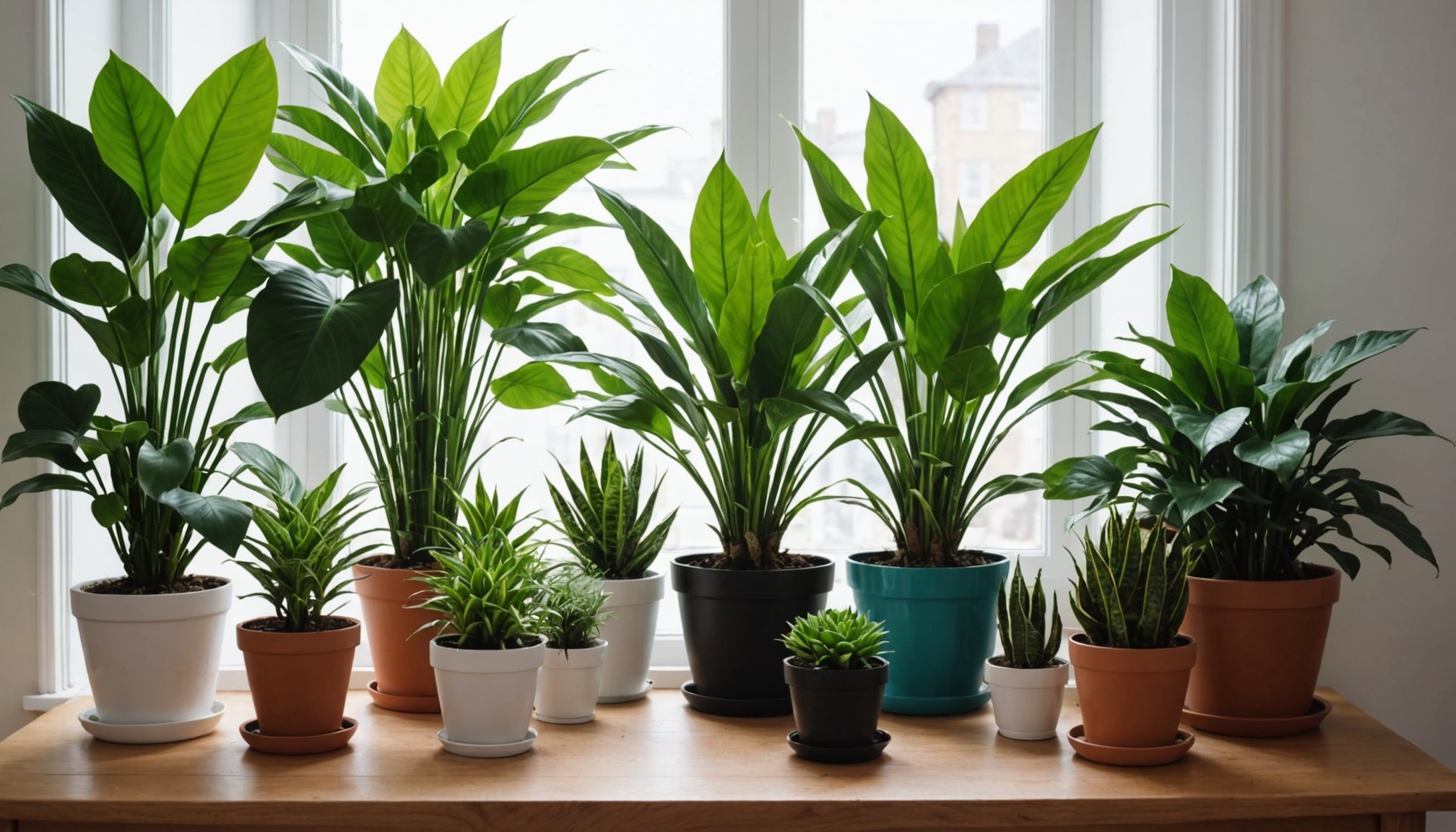Indoor air quality significantly impacts health and well-being, especially in UK homes where heating and ventilation can be limited. Low-maintenance houseplants not only enhance aesthetics but also purify the air naturally. Discover how incorporating these green companions can improve your living space and create a healthier environment with minimal effort. Let’s explore the top low-maintenance options that are perfect for busy lifestyles and suitable for any home.
Overview of Low-Maintenance Houseplants
Low-maintenance houseplants are ideal for those seeking greenery without the hassle of constant care. These plants thrive with minimal attention, making them perfect for busy individuals or those new to gardening. Low-maintenance houseplants not only enhance the aesthetic of a space but also offer practical benefits, such as improving indoor air quality. They absorb carbon dioxide and release oxygen, which can help reduce indoor pollutants and promote a healthier living environment.
Avez-vous vu cela : Enhance Your Home”s Air Quality: Top UK-Friendly Plants That Flourish in Any Climate
In the UK, where the climate can be unpredictable, selecting the right houseplants is crucial. The temperate climate, characterized by mild temperatures and high humidity, influences the types of plants that can thrive indoors. Many low-maintenance houseplants are well-suited to these conditions, requiring little more than occasional watering and indirect sunlight.
Indoor air quality is a significant concern, especially in urban areas where pollution levels are higher. Plants like the snake plant, spider plant, and peace lily are excellent choices as they are known for their air-purifying properties. These plants can help filter out toxins such as formaldehyde, benzene, and trichloroethylene, contributing to a fresher and healthier indoor atmosphere.
Lire également : Transform Your Tap: Enhancing Water Quality with Home Filtration in UK Hard Water Regions
Choosing the right low-maintenance houseplants can transform your home into a green oasis with minimal effort.
Top Low-Maintenance Houseplants for UK Homes
Selecting the best houseplants for UK homes can be a delightful experience. These plants not only beautify your space but also serve as excellent air-purifying plants.
Spider Plant (Chlorophytum comosum)
The Spider Plant is a favourite among beginners due to its resilience. It requires minimal care, thriving in indirect sunlight and tolerating occasional neglect. This plant is known for its ability to remove pollutants like formaldehyde and xylene, enhancing indoor air quality. Its availability in UK nurseries and online makes it a convenient choice for many.
Snake Plant (Sansevieria trifasciata)
The Snake Plant, or Mother-in-Law's Tongue, is another top contender for low-maintenance enthusiasts. It can survive in low light and requires infrequent watering. This plant is renowned for its air-purifying capabilities, effectively filtering toxins such as benzene and formaldehyde. Its hardy nature and stylish appearance make it a popular choice in the UK.
Peace Lily (Spathiphyllum spp.)
The Peace Lily is celebrated for its elegant blooms and easy-care routine. It thrives in shaded areas and needs watering only when the soil feels dry. This plant excels at removing indoor pollutants, contributing to a healthier living environment. Widely available in UK nurseries and online, the Peace Lily is a fantastic addition to any home.
Care Tips for Low-Maintenance Houseplants
When it comes to plant care, low-maintenance houseplants are a dream for those with a busy lifestyle. Understanding the basics of houseplant maintenance ensures your green companions thrive with minimal effort.
General Care Guidelines
Low-maintenance plants typically require less attention, but they still benefit from a routine. Regularly check for dust on leaves, as this can inhibit photosynthesis. Wiping leaves gently with a damp cloth can keep them healthy and vibrant.
Light, Water, and Soil Requirements
These plants often prefer indirect sunlight, making them suitable for various indoor spaces. Position them near windows with filtered light. Overwatering is a common mistake; ensure the soil dries out between waterings to prevent root rot. Use well-draining soil to maintain optimal moisture levels.
Troubleshooting Common Issues
Yellowing leaves can indicate overwatering, while brown tips might suggest a lack of humidity. Adjust watering schedules and consider using a humidity tray if needed. Pests, though less common in low-maintenance varieties, can still occur. Inspect plants regularly for signs of infestation and treat with natural remedies like neem oil if necessary.
By following these simple plant care tips, your low-maintenance houseplants will flourish, enhancing your living space with minimal fuss.
Air-Purifying Benefits of Houseplants
Houseplants are more than just decorative; they play a crucial role in air quality improvement. By absorbing toxins and releasing oxygen, they enhance the overall health benefits of indoor spaces.
How Houseplants Purify Air
Houseplants act as natural air filters. Through photosynthesis, they absorb carbon dioxide and release oxygen. Some plants go a step further by removing volatile organic compounds (VOCs) like formaldehyde, benzene, and trichloroethylene from the air. This process helps reduce indoor pollutants, making the air fresher and healthier to breathe.
Specific Pollutants Removed
Different houseplants target specific pollutants. For instance:
- Spider Plants are effective against formaldehyde and xylene.
- Snake Plants filter out benzene and formaldehyde.
- Peace Lilies combat ammonia, benzene, and formaldehyde.
Studies Supporting Health Benefits
Research supports the health benefits of indoor plants. A NASA study highlighted plants' ability to purify air in enclosed environments. Additionally, a study by the University of Technology Sydney found that indoor plants can reduce stress and enhance mood, contributing to overall well-being. These findings underscore the importance of incorporating houseplants into indoor spaces for both aesthetic and health reasons.
Suitability of Houseplants for UK Homes
Choosing indoor plants for UK homes requires consideration of the UK climate, which is marked by its temperate nature, mild temperatures, and high humidity. These factors significantly influence which plants will thrive indoors. Seasonal changes, such as shorter daylight hours in winter, can affect plant growth and care routines.
When selecting houseplants, consider their light and moisture needs. The UK climate often means less direct sunlight, so plants like the Peace Lily and Snake Plant, which thrive in low-light conditions, are ideal. Additionally, the high humidity levels in the UK can be beneficial for tropical plants, which prefer moist environments.
Seasonal changes can also impact plant care. During winter, when indoor heating can dry out the air, increasing humidity with a water tray or a humidifier can be beneficial. In contrast, summer may require more frequent watering due to higher temperatures.
For regions with specific climate variations, such as the cooler north, hardy plants like the Spider Plant are recommended. In warmer areas, consider incorporating plants that can handle fluctuating temperatures. By understanding these factors, you can select houseplants that will not only survive but thrive in your UK home.
Scientific Names and Classification
Understanding plant taxonomy is essential for accurate plant identification and care. Scientific names provide a universal language, ensuring clarity and consistency across different regions and languages. This is particularly useful for gardeners and plant enthusiasts who might encounter various common names for the same species.
Classification of Featured Houseplants
The scientific classification of houseplants involves categorizing them based on shared characteristics. For instance, the Spider Plant is classified as Chlorophytum comosum, belonging to the Asparagaceae family. The Snake Plant, known scientifically as Sansevieria trifasciata, is part of the Asparagaceae family as well. Meanwhile, the Peace Lily falls under the genus Spathiphyllum and belongs to the Araceae family. These classifications help in understanding their care needs and environmental preferences.
Resources for Further Botanical Research
For those interested in delving deeper into plant taxonomy, several resources are available. Botanical gardens often provide detailed information on plant species and their classifications. Online databases, such as the International Plant Names Index (IPNI), offer extensive records on scientific names and classifications. These resources can enhance your knowledge and appreciation of the intricate world of plants.
Availability of Low-Maintenance Houseplants
In the UK, plant availability is abundant, offering various options for acquiring low-maintenance houseplants. Local nurseries are a treasure trove for plant enthusiasts, providing a personal touch and expert advice. These nurseries often stock a wide range of plants suited to the UK climate, ensuring you find the perfect match for your home. Visiting a nursery allows you to inspect the plants closely, ensuring you select healthy specimens.
On the other hand, online shopping offers convenience and a broader selection. Many websites specialise in houseplants, delivering them directly to your door. This option is ideal for those with a busy schedule or limited access to local nurseries. However, it's crucial to research the seller's reputation and check customer reviews to ensure quality and reliability.
When selecting healthy plants, pay attention to the leaves and roots. Look for vibrant, unblemished foliage and avoid plants with yellowing or wilting leaves. Check for firm, white roots that are not overcrowded in the pot. Whether you choose to shop locally or online, these tips will help you find robust, thriving houseplants to enhance your living space.
Additional Health Benefits of Houseplants
Houseplants offer more than just aesthetic appeal and air purification; they significantly contribute to mental health and overall wellbeing. The presence of indoor plants can have profound psychological effects, creating a calming atmosphere that helps reduce stress and anxiety levels. This connection between plants and stress reduction is supported by numerous studies, indicating that interacting with greenery can lower cortisol levels, the hormone associated with stress.
Furthermore, houseplants are known to enhance productivity and creativity. The soothing presence of plants in a workspace can lead to improved concentration and focus, making tasks feel less daunting. Employees in plant-filled offices often report higher job satisfaction and increased output. This is because plants create a more pleasant and stimulating environment, encouraging a positive mindset.
Incorporating houseplants into your home or office can also foster a sense of responsibility and routine, contributing to mental wellbeing. Caring for plants provides a sense of accomplishment and purpose, which can be particularly beneficial for individuals experiencing mental health challenges. By integrating plants into indoor spaces, you not only beautify your environment but also support your psychological health and enhance your overall quality of life.
Images and Visual Inspiration
Visual references play a crucial role in selecting the perfect houseplants for your space. They not only provide a clear idea of what to expect but also inspire creativity in arranging and caring for your plants. Houseplant photography captures the essence of each plant, highlighting its unique characteristics and how it might fit into your home environment.
Curated images of featured houseplants, such as the Spider Plant, Snake Plant, and Peace Lily, offer a glimpse into their aesthetic appeal and potential placement options. These visuals can guide you in choosing plants that complement your interior design and personal style. Additionally, seeing these plants in various settings can spark ideas for integrating them into your living space.
For those seeking more detailed guidance, visual guides are invaluable resources. They provide step-by-step instructions on plant care, from watering schedules to light requirements, often accompanied by illustrative images. Online platforms and gardening books frequently offer such guides, making it easier to understand and implement the best practices for maintaining healthy houseplants. By utilising these visual tools, you can enhance your plant care routine and create a thriving indoor garden.












